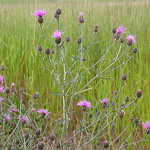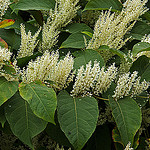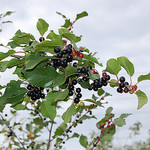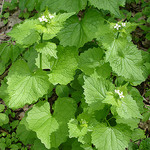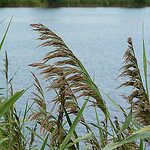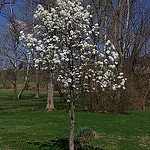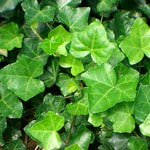Invasive Plant Species
Invasive plant species take over natural areas and crowd out the native plants. They often create dense stands that are void of the diversity and delicately balanced web of life that mark healthy ecosystems. You can help stop their spread by learning to identify invasive plants, removing them from your property and preventing new introductions to other areas. See Meeting the Challenge of Invasive Plants: A Framework for Action for a detailed assessment of the problem in Michigan.
Identification
The Midwest Invasive Species Network (MISN) has 40 different species identification education modules that will help you identify invasive plants. They have an even more extensive library of fact sheets that can be printed and taken with you when scouting for invasive plants.
A Field Identification Guide to Invasive Plants in Michigan's Natural Communities is another great resource. The Wild Ones Red Cedar Chapter sells this compact field guide at our native plant sales.
A Field Identification Guide to Invasive Plants in Michigan's Natural Communities is another great resource. The Wild Ones Red Cedar Chapter sells this compact field guide at our native plant sales.
Removal
Michigan's Invasive Species Program is cooperatively implemented by the Michigan Departments of Agriculture & Rural Development, Environmental Quality and Natural Resources. There is a wealth of information about invasive species listed on their website.
The Midwest Invasive Plant Network (MIPN) has an Invasive Plant Control Database which gives control options for additional invasive species.
Many options are available for controlling invasive plant species ranging from pulling, cutting, prescribed burns, to herbicides. If herbicides are recommended, be sure to follow the label exactly and apply them at the correct time for maximum efficacy against the target species and to limit damage to native vegetation. Always wear the proper personal protective equipment (gloves, goggles, etc). Applicators must be licensed if applying herbicides for hire and permits are needed for applications in wetland areas.
Some newer herbicides on the market are tolerated by native grasses and forbs while still being highly effective against invasive species. Often very little herbicide is needed per gallon so a syringe is a good measuring tool to make sure you use the correct amount. Calibrate your sprayer with plain water first to insure you are applying the correct amount in a given area. See the Invasive Plant Management Guide for Natural Area Managers for more details.
Other ideas to apply chemicals with precision include making your own herbicide applicator wand, tongs of death or use the glove of death method. Dyes made for use with herbicides can help you keep track of what you have already treated. Walk backward when applying herbicides to keep from walking through treated areas until the chemical has dried. Post signage to warn others that the vegetation has been treated.
Store herbicides properly, away from children and pets, and keep them from freezing or being exposed to sunlight. High pH water neutralizes many herbicides. One solution is to add 2.72 oz (by weight) of ammonium sulfate per gallon of water. This fertilizer conditions the water and helps the herbicide get absorbed more quickly. Work from the leading edge of satellite populations back toward the main infestation. Repeat treatments over successive years until the invasive seed bank has expired.
The Midwest Invasive Plant Network (MIPN) has an Invasive Plant Control Database which gives control options for additional invasive species.
Many options are available for controlling invasive plant species ranging from pulling, cutting, prescribed burns, to herbicides. If herbicides are recommended, be sure to follow the label exactly and apply them at the correct time for maximum efficacy against the target species and to limit damage to native vegetation. Always wear the proper personal protective equipment (gloves, goggles, etc). Applicators must be licensed if applying herbicides for hire and permits are needed for applications in wetland areas.
Some newer herbicides on the market are tolerated by native grasses and forbs while still being highly effective against invasive species. Often very little herbicide is needed per gallon so a syringe is a good measuring tool to make sure you use the correct amount. Calibrate your sprayer with plain water first to insure you are applying the correct amount in a given area. See the Invasive Plant Management Guide for Natural Area Managers for more details.
Other ideas to apply chemicals with precision include making your own herbicide applicator wand, tongs of death or use the glove of death method. Dyes made for use with herbicides can help you keep track of what you have already treated. Walk backward when applying herbicides to keep from walking through treated areas until the chemical has dried. Post signage to warn others that the vegetation has been treated.
Store herbicides properly, away from children and pets, and keep them from freezing or being exposed to sunlight. High pH water neutralizes many herbicides. One solution is to add 2.72 oz (by weight) of ammonium sulfate per gallon of water. This fertilizer conditions the water and helps the herbicide get absorbed more quickly. Work from the leading edge of satellite populations back toward the main infestation. Repeat treatments over successive years until the invasive seed bank has expired.
Prevent New Introductions
To keep invasive species from spreading, remove soil which might contain seeds from the treads of your shoes and vehicle tires before leaving a recreation site.
Never landscape with invasive plants and ask your nursery to stop selling invasive species. Educate your friends and neighbors. The Midwest Invasive Plant Network has a brochure and smartphone app that give alternatives to commonly planted invasive species. Native Alternatives to Invasive Plants is a book with lots of good ideas as well.
Below are just a few invasive plant species that are still sold at nurseries and garden centers.
Never landscape with invasive plants and ask your nursery to stop selling invasive species. Educate your friends and neighbors. The Midwest Invasive Plant Network has a brochure and smartphone app that give alternatives to commonly planted invasive species. Native Alternatives to Invasive Plants is a book with lots of good ideas as well.
Below are just a few invasive plant species that are still sold at nurseries and garden centers.
